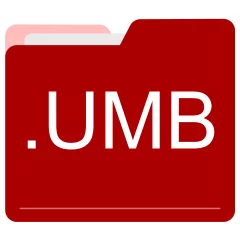UMB file format description

Many people share UMB files but don't explain how to use them. This can make it hard to know which software can open, change, or print these files. We made this page to help you understand how to work with UMB files. Here, you'll find info on software that works with these files. This includes simple programs for opening and converting them. We also share simple steps for editing these files and changing them into different formats. Whether you need to open, edit, or change a UMB file, our website has all the tips and tools you'll need to do it easily.
1 filename extension(s) found in our database:
UMB - MemMaker Configuration Backup File
The UMB file is categorized under Configuration. It is associated to MemMaker, serving as a MemMaker Configuration Backup File. Starting with MS-DOS 6, Memmaker is a utility that optimizes memory by determining the best order to load TSRs and drivers in the upper memory area (UMA). MemMaker changes the Windows SYSTEM.INI file only if you are running Windows 3.0, and only if certain options are selected prior to memory optimization. If MemMaker does change the file, it saves the original file as SYSTEM.UMB. Visit the website of MemMaker for a detailed description of the UMB format.
| Application: | MemMaker |
|---|---|
| Category: | Configuration files |
| Mime-type: | application/octet-stream |
| Magic: | - / - |
| Aliases: | - |
MemMaker Configuration Backup File related extensions:
- sts MemMaker Status Information File
Did someone accidentally misspell the UMB filename?
The UMB filename extension may be misspelled. We compiled a list of similar file extensions to help you find errors.
Filename extensions similar to UMB:
- kmb AiM SmartyCam GPS Manager Track Data
- ulb COBOL Unisys Library File
- imb IncrediMail Address Book
- umv Unimo DVR Video
- ubm Apple iPhoto mtwain Install Data
- jmb Juniper Message Bundle Data
Windows can't open your UMB file?
When you try to open a file by double-clicking it, Windows looks at the file's name to figure out what to do. If Windows doesn't know the file type, it'll ask you to choose an app to open this UMB file.
To set the UMB file association in Windows 11, you can follow these steps
- Open the Settings app by clicking on the Start menu and selecting the gear icon.
- In the Settings app, click on System and then select Apps from the left-hand side menu.
- Scroll down and click on the Default apps option.
- In the Default apps section, you will find various categories. They include Email, Web browser, and Music player.
- Locate the category that matches the file type you want to associate. For example, choose Photos for image files, or Video player for video files.
- Click on the current default app listed under the category. A list of available apps will appear.
- Choose the app you want to set as the default for that file type. If the app you want is not listed, click on More apps to see more options. Or, click on Look for an app in the Microsoft Store to search for apps.
- After selecting the app, it will become the default choice for opening files of that type.
It's worth mentioning that you don't always need to set UMB file association. Many apps can open files. They don't need a specific file association to be set.
Handle UMB files with care
Exercise caution when handling UMB files from unknown sources. Files from certain sources can threaten your computer's security. They might contain malware, viruses, or harmful software. To minimize risks, avoid downloading or opening unfamiliar UMB files. Use trusted antivirus software to scan files from unknown sources before opening.
If you find the information on this UMB page useful, please feel free to link to this page.